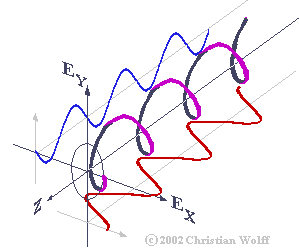I'm having trouble understanding the diagrams of elctromagnetic waves.
I have no problem with any concept in classical mechanics, and I think this can be answered without any relativity (which I don't know yet). I hope for an answer which is as intuitive as possible but any answer will be good.
So in the common diagram of an electromagnetic wave:

What exactly do the vectors represent? The wave is propagating though an eletromagnetic field. Are the lines just the field created by a particle?
We learned in physics that a charged particle creates a field in all of space,
Is this a picture of changes in the field when it moves?
And if so, how does it move? does it move up and down with the amplitude of this wave?
Lastly, It's not clear to me why the E-field part is not in the direction of the
motion of the wave, because usually an electric field is depicted as so:

i.e it is in a direction "outwards" from the source of the charge.
This is really running through my mind for some time, so thanx for reading this!


Best Answer
Each vector represents the value (magnitude and direction) of the electric (blue) or magnetic (field) at the point where the tail of the vector lies. Keep in mind that the electric and magnetic fields each have a value at every single point in space, but of course it's impossible to actually show all those values. Only the values at a selection of points are shown, enough to give you an idea of how the field behaves.
What may be confusing you is that this is not the field created by a particle. Electric and magnetic fields can be created in many different ways. One way is to have a charged particle sitting in space, or moving around in space, but a totally separate way is to have electric and magnetic fields propagating through the vacuum. In this latter case, one could say that the electric and magnetic fields create each other. (That's maybe a bit misleading when you get into the technical details of it, but it should be good enough as a high-level description.)
If you had an electric dipole (a positive and negative charge very close to each other), and the two charges were oscillating up and down sinusoidally so that they switched positions with each half-oscillation, and if you looked only along a ray perpendicular to the axis along which the particles were oscillating, then you'd see something like what is shown in that picture. The particles would start the EM wave going, but then it would move away from them without involving any more particles.
Again, that is a totally different way of creating an electric field which has almost nothing to do with the electromagnetic wave shown at the top. When an electric charge creates an electric field, then yes, the field points away from the charge, but when a changing magnetic field "creates" an electric field, the electric field points perpendicular to the magnetic field (and also perpendicular to the direction in which the magnetic field is propagating).